Helicopter Rotor Thickness Noise Control Using Unsteady Force Excitation
Abstract
:1. Introduction
2. Principle of Thickness Noise Reduction
3. Validation of Noise Reduction Method
3.1. Model Rotor and Test System
3.2. Results and Discussions
4. Conclusions
- (1)
- The sound pressure of rotor thickness noise is characterized by a significant negative pulse caused by the time derivative of the blade surface velocity. The noise reduction can be achieved by using an unsteady excitation force at the rotating blade tip to generate an opposite sound waveform (anti-noise) as the thickness noise with a well-designed control law. The time derivative of the control force dominates the magnitude and the phase of anti-noise.
- (2)
- The trailing edge winglet with high-frequency motion is equipped at the rotor blade tip to generate the unsteady control force. When the windward area of the winglet changes periodically, anti-noise can be generated by the resultant in-plane force. A smart drive mechanism combining piezoelectric stack and diamond-shaped amplifiers was designed to drive the high-frequency motion of th ewinglet. Driving frequency up to 120 Hz (three harmonics of rotation frequency) and approximately 3° deflection angle of the winglet was achieved in testing.
- (3)
- The test results show that the noise in the front area of the rotor was effectively reduced, and the noise reduction up to 3 dB was achieved in the plane of the rotor disk under the control law of the first-order frequency and the 3° deflection angle of the winglet. Moreover, the noise reduction at the observation position strongly related to the azimuth angles, which is independent of pitch angle and distances. This indicates that the rotor noise in a certain area, but not all areas, can be reduced through designing a particular control law.
- (4)
- The deflection amplitude, frequency, and initial excitation phase angle are governing parameters that affect noise control. The magnitude of noise reduction is proportional to the deflection angle of the winglet, however, the effect of frequency and initial excitation phase angle is combined. For each frequency, there is always an optimal initial excitation phase angle to minimize the noise level, but it varies with control frequency. The relationship between control phase and frequency was derived in this paper.
- (5)
- The previous study in reference 25 states that the anti-noise is generated from the lift change of the blade, not the active flap. The flap alters the blade torsion and changes the local angle of attack and lift, which is responsible for the generation of in-plane force needed for the noise reduction at the target observer. In the present study, the small-scale rotor was stiff in torsion, and the blade torsion induced by the active flap was very small. The results indicate that noise reduction can also be achieved by relying solely on the high-frequency motion of the winglet. It is one finding from our test that needs to be further verified by sophisticated simulation work.
Author Contributions
Funding
Acknowledgments
Conflicts of Interest
References
- Brentner, K.S.; Farassat, F. Helicopter Noise Prediction: The Current Status and Future Direction. J. Sound Vib. 1994, 170, 79–96. [Google Scholar] [CrossRef]
- Baeder, J.D. Passive Design Reductions of High-Speed Impulsive Rotor Noise. J. Am. Helicopter Soc. 1998, 43, 222–234. [Google Scholar] [CrossRef]
- Chae, S.; Yee, K.; Yang, C.; Aoyama, T.; Jeong, S.; Obayashi, S. Helicopter rotor shape optimization for the improvement of aeroacoustic performance in hover. J. Aircr. 2010, 47, 1770–1783. [Google Scholar] [CrossRef]
- Edwards, B.; Cox, C. Revolutionary Concepts for Helicopter Noise Reduction: SILENT Program; Report No.:NASA/CR-2002-211650; NASA Langley Research Center: Hampton, VA, USA, 2002.
- Yung, H.Y. Rotor Blade-Vortex Interaction Noise. Prog. Aerosp. Sci. 2000, 36, 97–115. [Google Scholar] [CrossRef]
- Barakos, G.N.; Garcia, A.J. CFD analysis of hover performance of rotors at full and model-scale conditions. Aeronaut. J. 2016, 120, 1386–1423. [Google Scholar] [CrossRef]
- Rauch, P.; Gervais, M.; Cranga, P.; Baud, A.; Hirsch, J.F.; Walter, A.; Beaumier, P. Blue edge: The design, development and testing of a new blade concept. In Proceedings of the 67th Annual Forum of the American Helicopter Society, Virginia Beach, VA, USA, 3–5 May 2011; pp. 542–555. [Google Scholar]
- Nguyen, K.; Betzina, M.; Kitaplioglu, C. Full-Scale Demonstration of Higher Harmonic Control for Noise and Vibration Reduction on the XV-15 Rotor. J. Am. Helicopter Soc. 2001, 46, 182–191. [Google Scholar] [CrossRef]
- Splettstoesser, W.R.; Kube, R.; Wagner, W.; Seelhorst, U.; Boutier, A.; Micheli, F.; Pengel, K. Key results from a higher harmonic control aeroacoustic rotor test (HART). J. Am. Helicopter Soc. 1997, 42, 58–78. [Google Scholar] [CrossRef]
- Anobile, A.; Bernardini, G.; Gennaretti, M. Investigation on a High-Frequency Controller for Rotor BVI Noise Alleviation. Int. J. Acoust. Vib. 2016, 21, 239–248. [Google Scholar] [CrossRef]
- Jacklin, S.A.; Blaas, A.; Teves, D.; Kube, R. Reduction of helicopter bvi noise, vibration and power consumption through individual blade control. In Proceedings of the AHS 51st Annual Forum and Technology Display, Fort Worth, TX, USA, 9–11 May 1994. [Google Scholar]
- Küfmann, P.; Bartels, R.; Kessler, C.; van der Wall, B.G. On the design and development of a multiple swashplate control system for the realization of individual blade control (IBC) for helicopters. In Proceedings of the 67th Annual Forum of the American Helicopter Society, Virginia Beach, VA, USA, 3–5 May 2011. [Google Scholar]
- Aoyama, T.; Yang, C.; Kondo, N.; Saito, S. Comparison of Noise Reduction Effect between AFC and Conventional IBC by Moving Overlapped Grid Method. In Proceedings of the 12th AIAA/CEAS Aeroacoustics Conference, Cambridge, MA, USA, 8–10 May 2006. [Google Scholar]
- Kobiki, N.; Murashige, A.; Tsuchihashi, A.; Yamakawa, E. Experimental Study of Active Techniques for Blade/Vortex Interaction Noise Reduction. Trans. Jpn. Soc. Aeronaut. Space Sci. 2009, 52, 159–167. [Google Scholar] [CrossRef] [Green Version]
- Straub, F.; Anand, V.; Birchette, T.; Lau, B. Wind Tunnel Test of the SMART Active Flap Rotor. In Proceedings of the American Helicopter Society 65th Annual Forum and Technology Display, Grapevine, TX, USA, 27–29 May 2009. [Google Scholar]
- Modini, S.; Graziani, G.; Bernardini, G.; Gennaretti, M. Blade-Vortex Interaction Noise Controller Based on Miniature Trailing Edge Effectors. Int. J. Acoust. Vib. 2018, 23, 378–384. [Google Scholar] [CrossRef]
- Nelson, C.T.; Rediniotis, O.K. Active flap deployment system for blade-disturbance interaction alleviation. J. Fluids Eng. Trans. ASME 2004, 126, 1006–1014. [Google Scholar] [CrossRef]
- Saito, S.; Kobiki, N.; Tanabe, Y. Application of an active device for helicopter noise reduction in JAXA. Fluid Dyn. Res. 2010, 42, 015006. [Google Scholar] [CrossRef]
- Booth, E.R.; Wilbur, M.L. Acoustic aspects of Active-Twist Rotor control. J. Am. Helicopter Soc. 2004, 49, 3–10. [Google Scholar] [CrossRef]
- Chen, P.C.; Baeder, J.D.; Evans, R.A.D.; Niemczuk, J. Blade-vortex interaction noise reduction with active twist smart rotor technology. Smart Mater. Struct. 2001, 10, 77–85. [Google Scholar] [CrossRef]
- Gaurav, G.; Schmitz, F.H. Helicopter Thickness Noise Reduction Possibilities Through Active On-Blade Acoustic Control. J. Aircr. 2010, 47, 41–52. [Google Scholar] [CrossRef]
- Gopalan, G.; Schmitz, F.H. Low harmonic near-in-plane far-field helicopter noise cancellations using distributed on-blade controls. In Proceedings of the AHS Southwest Region Technical Specialists’meeting, Dallas-Fort Worth, TX, USA, 15–17 October 2008. [Google Scholar]
- Sim, B.W. Suppressing In-Plane, Low Frequency Helicopter Harmonic Noise with Active Controls. In Proceedings of the American Helicopter Society San Francisco Bay Area Chapter’s Aeromechanics Specialist’s Meeting, San Francisco, CA, USA, 22–24 January 2008. [Google Scholar]
- Yang, T.X.; Brentner, K.S.; Walsh, G.D. A Dual Compact Model for Rotor Thickness Noise Prediction. J. Am. Helicopter Soc. 2018, 63, 12–23. [Google Scholar] [CrossRef]
- Sim, B.W.; JanakiRam, R.D.; Lau, B.H. Reduced In-Plane, Low Frequency Noise of an Active Flap Rotor. J. Am. Helicopter Soc. 2014, 59, 1–17. [Google Scholar] [CrossRef]
- Sargent, D.C.; Schmitz, F.H. Fundamental Experimental Studies Supporting Active-Jet Acoustic Control of In-Plane Rotor Harmonic Noise. J. Aircr. 2014, 51, 434–446. [Google Scholar] [CrossRef]
- Farassatm, F.; Succi, G.P. The prediction of helicopter discrete frequency noise. Vertica 1983, 7, 309–320. [Google Scholar]
- Zhao, Y.Y.; Shi, Y.J.; Xu, G.H. Helicopter blade-vortex interaction airload and noise using coupling CFD/VWM method. Appl. Sci. 2017, 7, 381. [Google Scholar] [CrossRef]
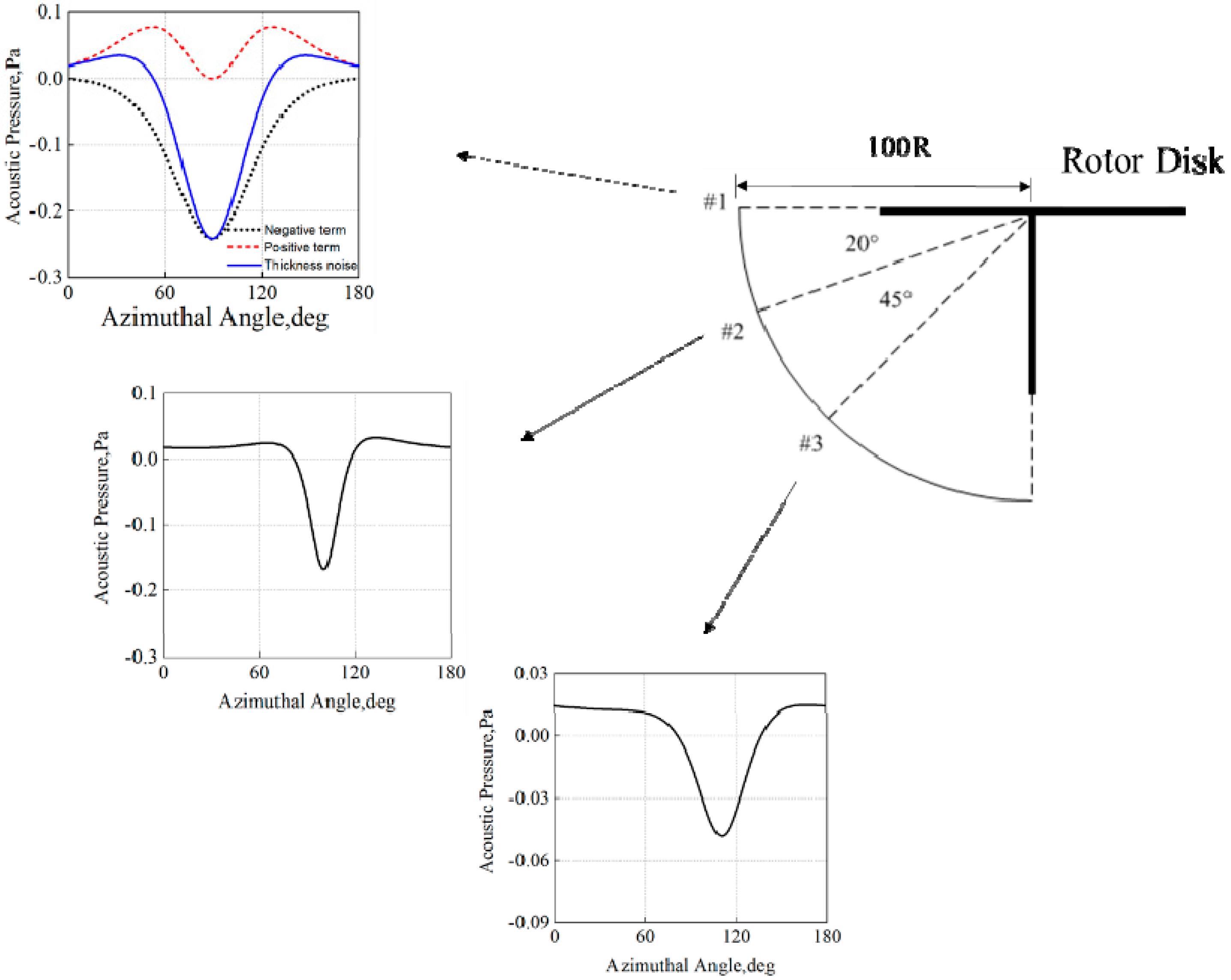
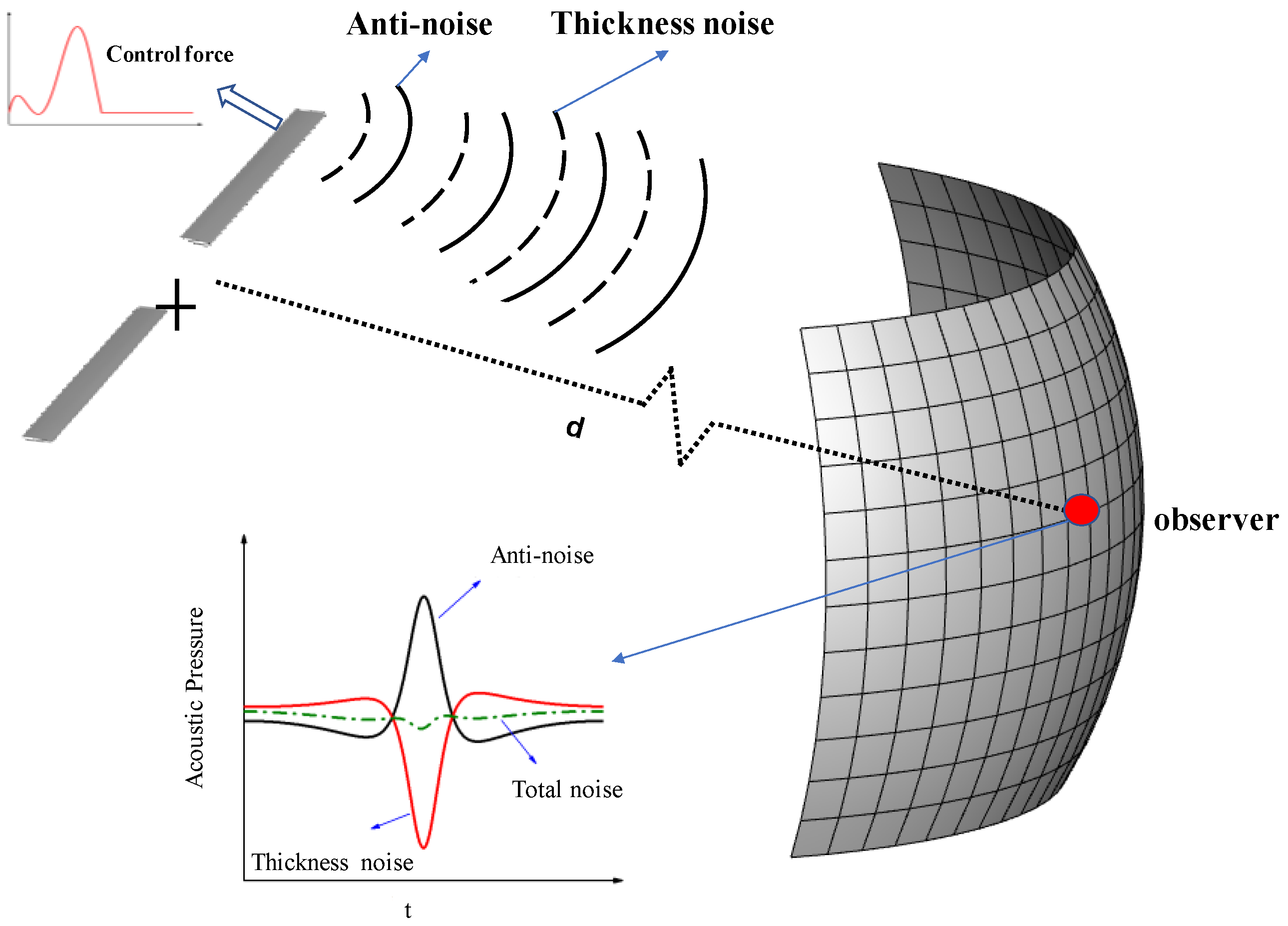
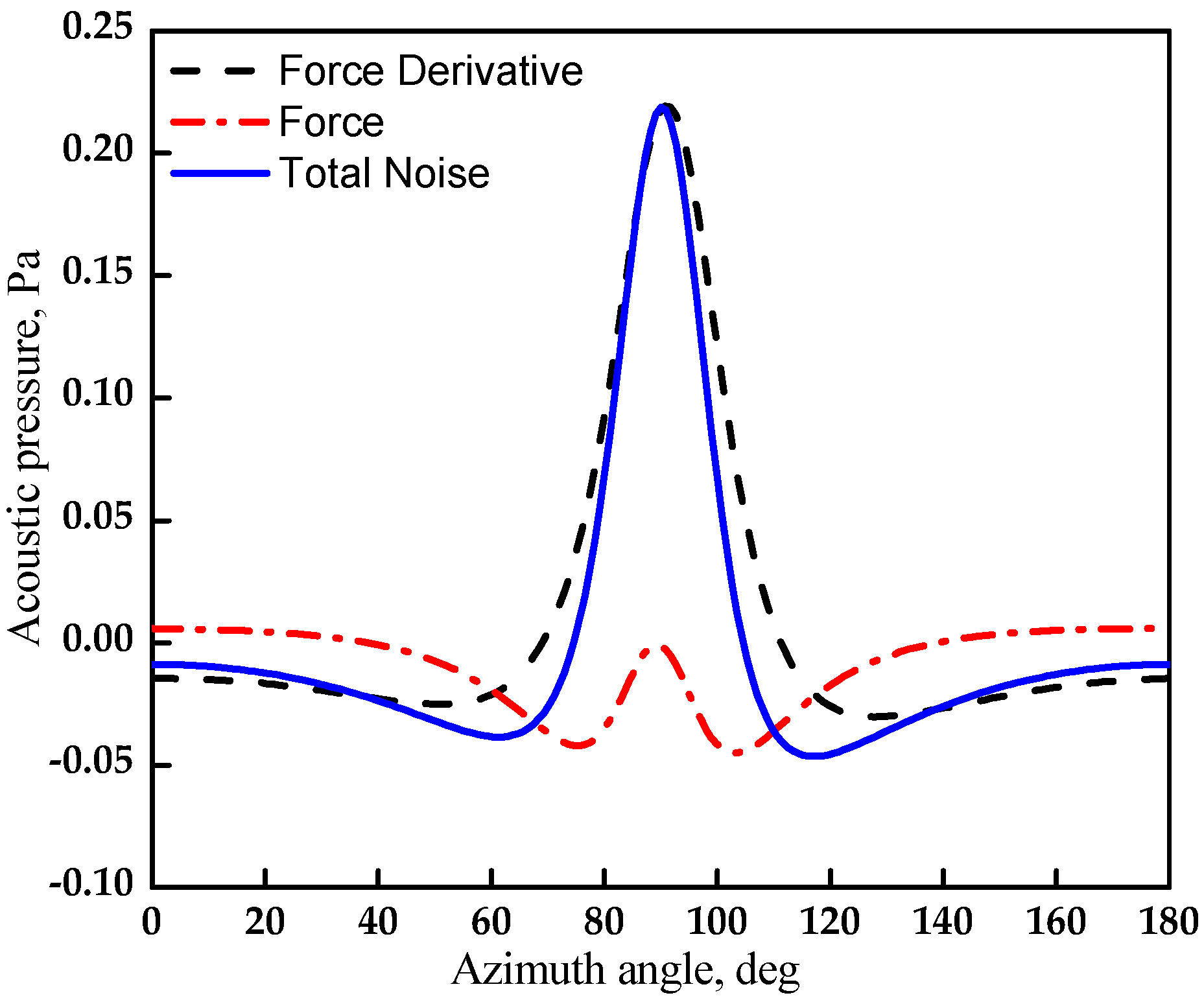
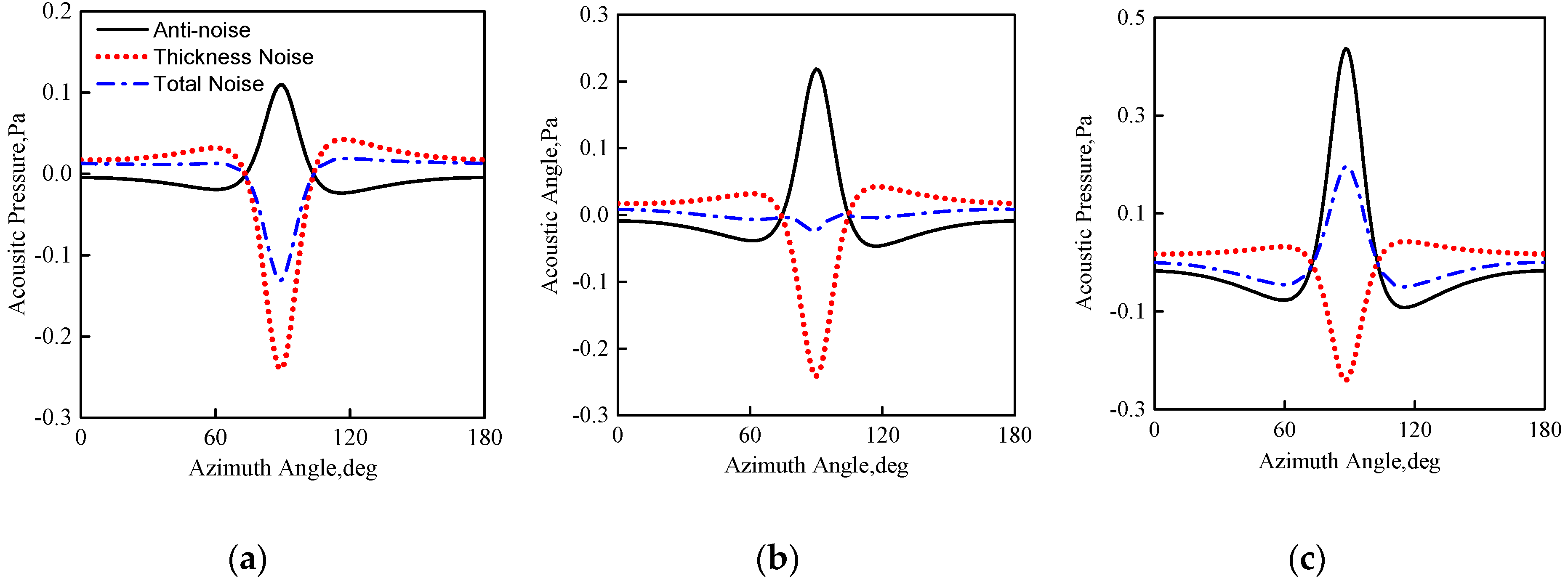

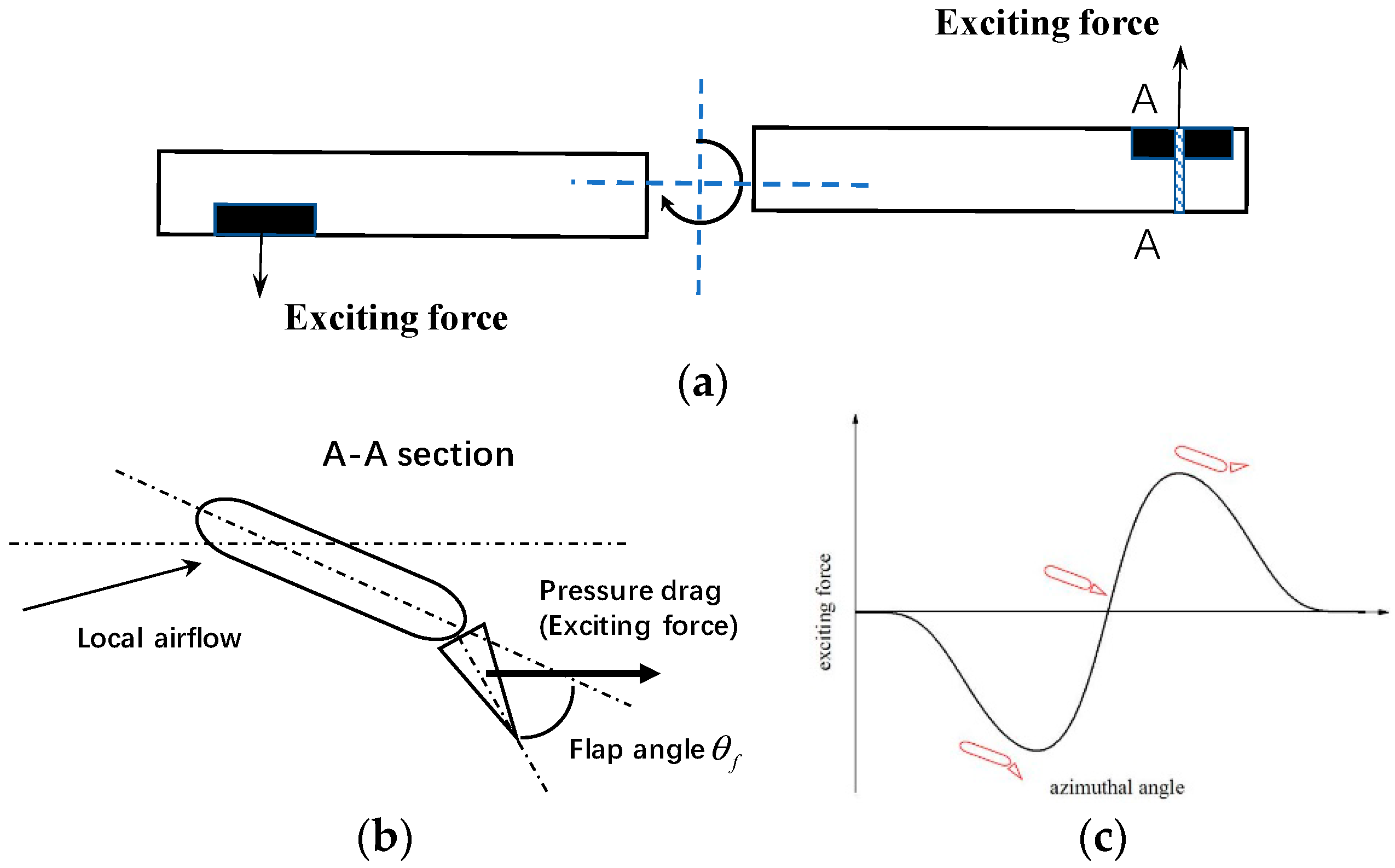
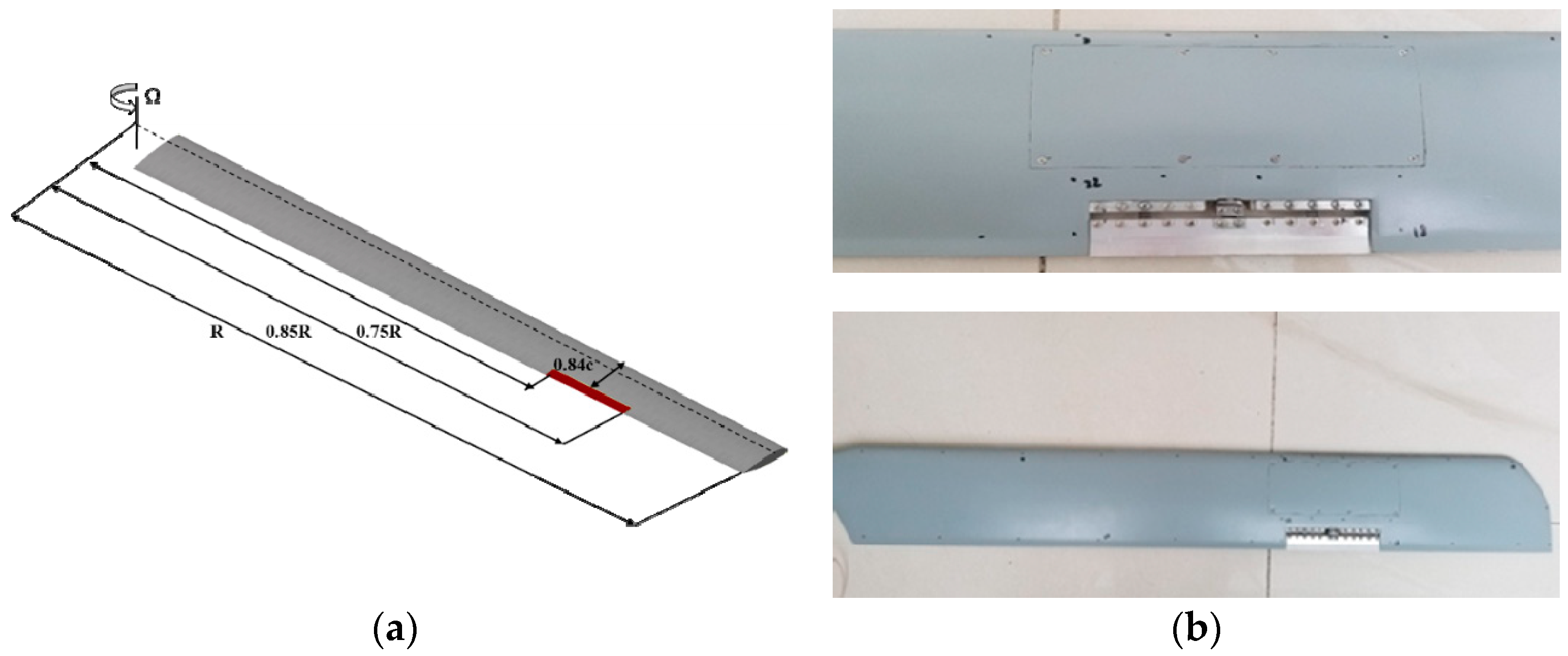

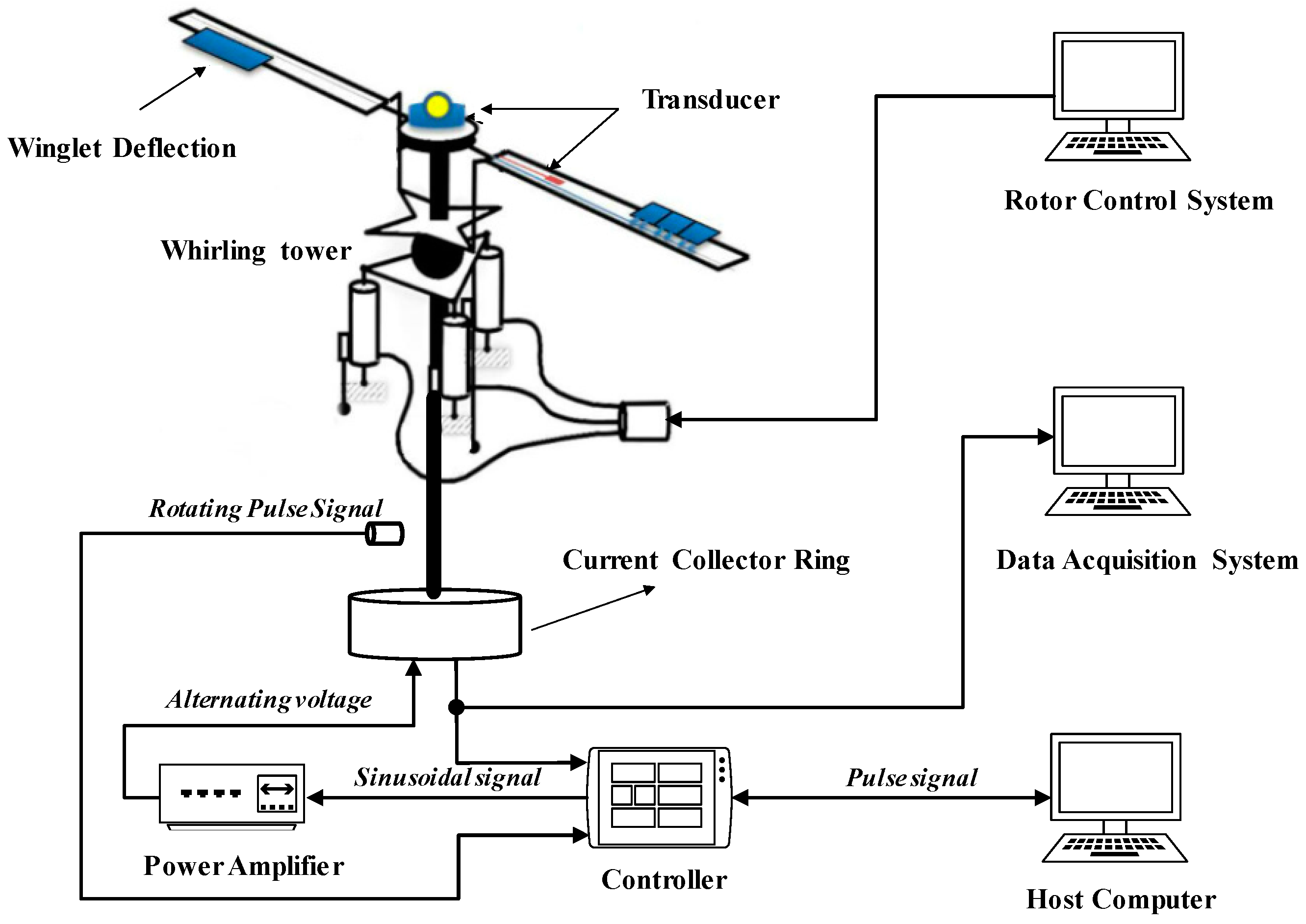
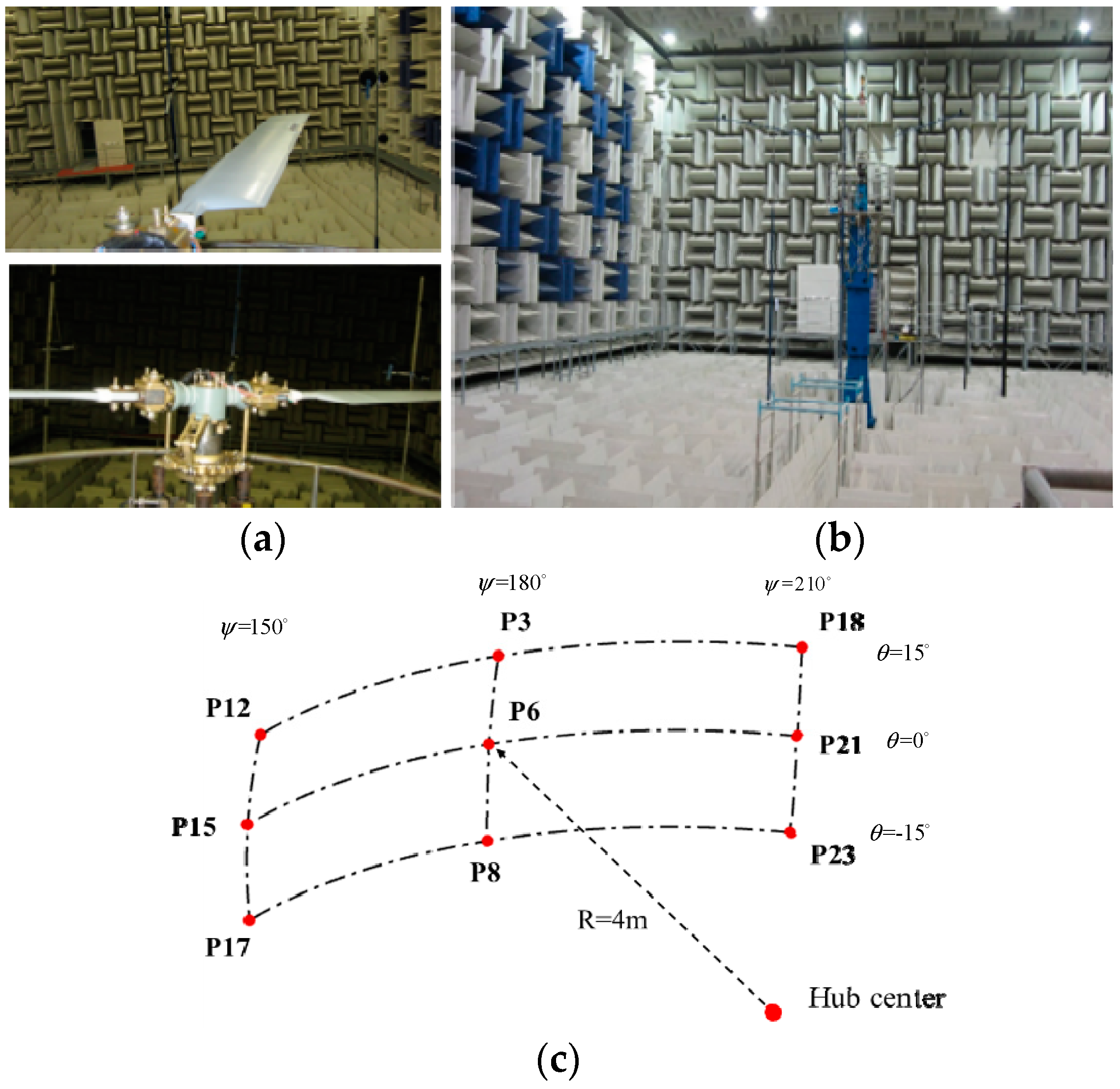


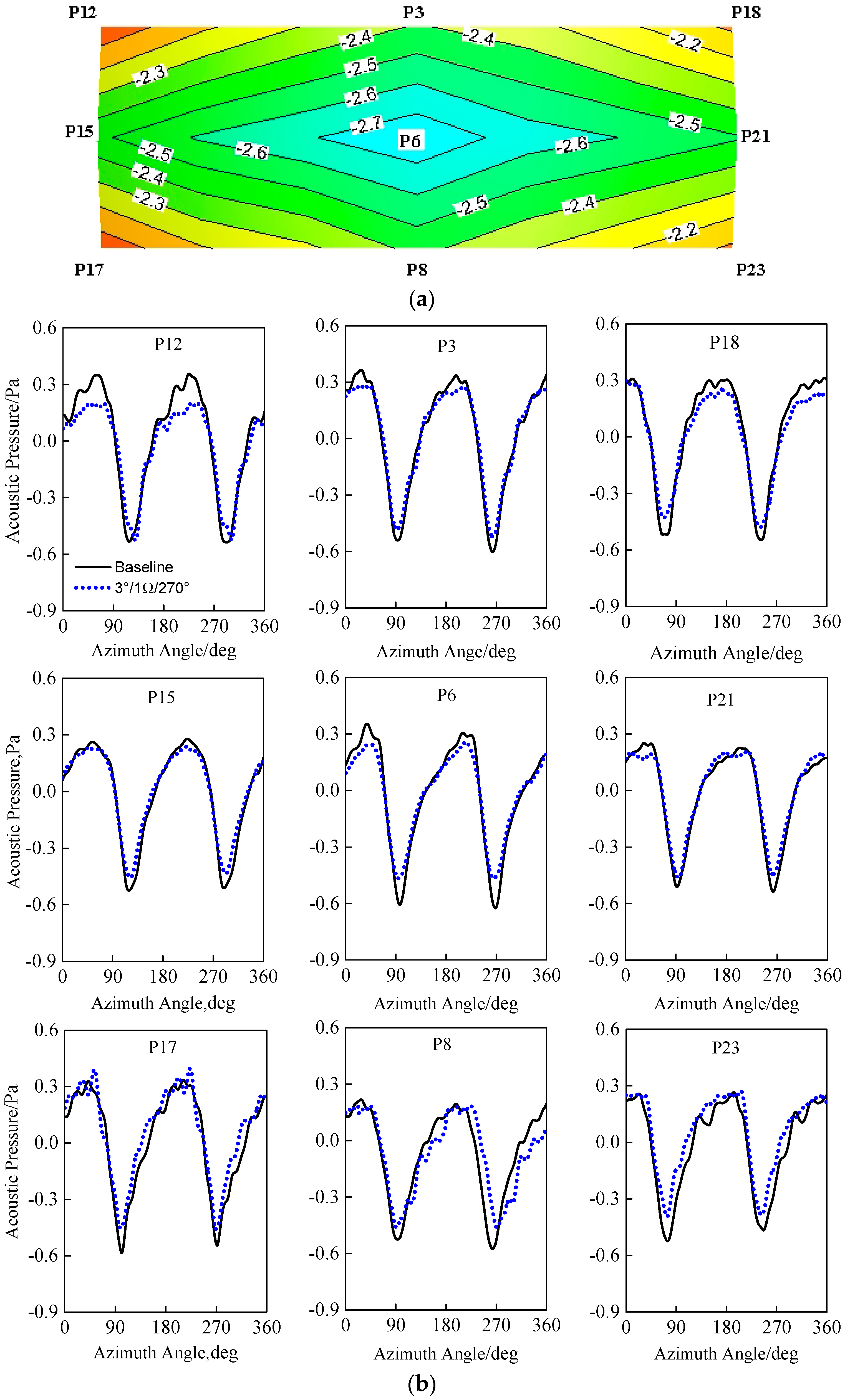
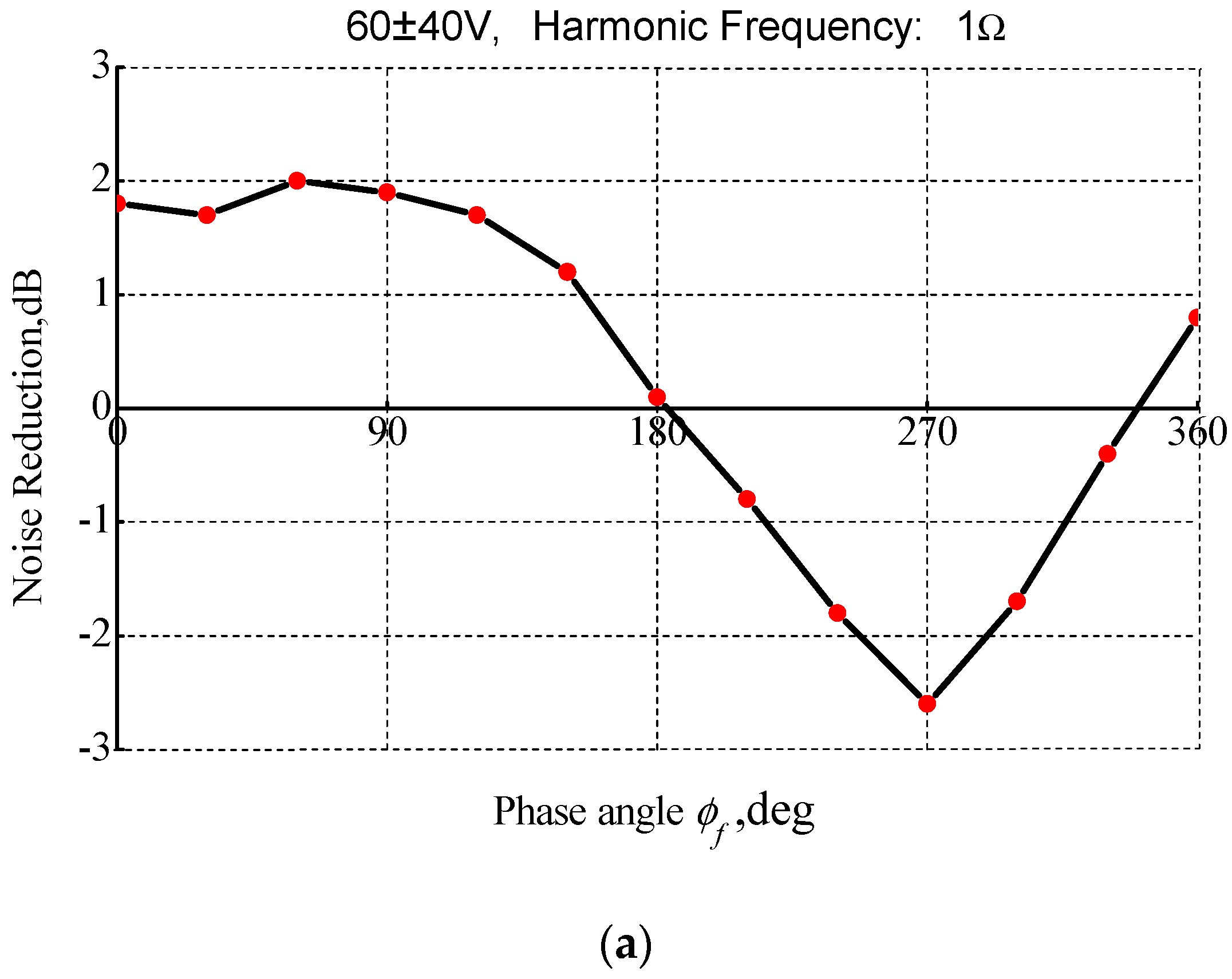
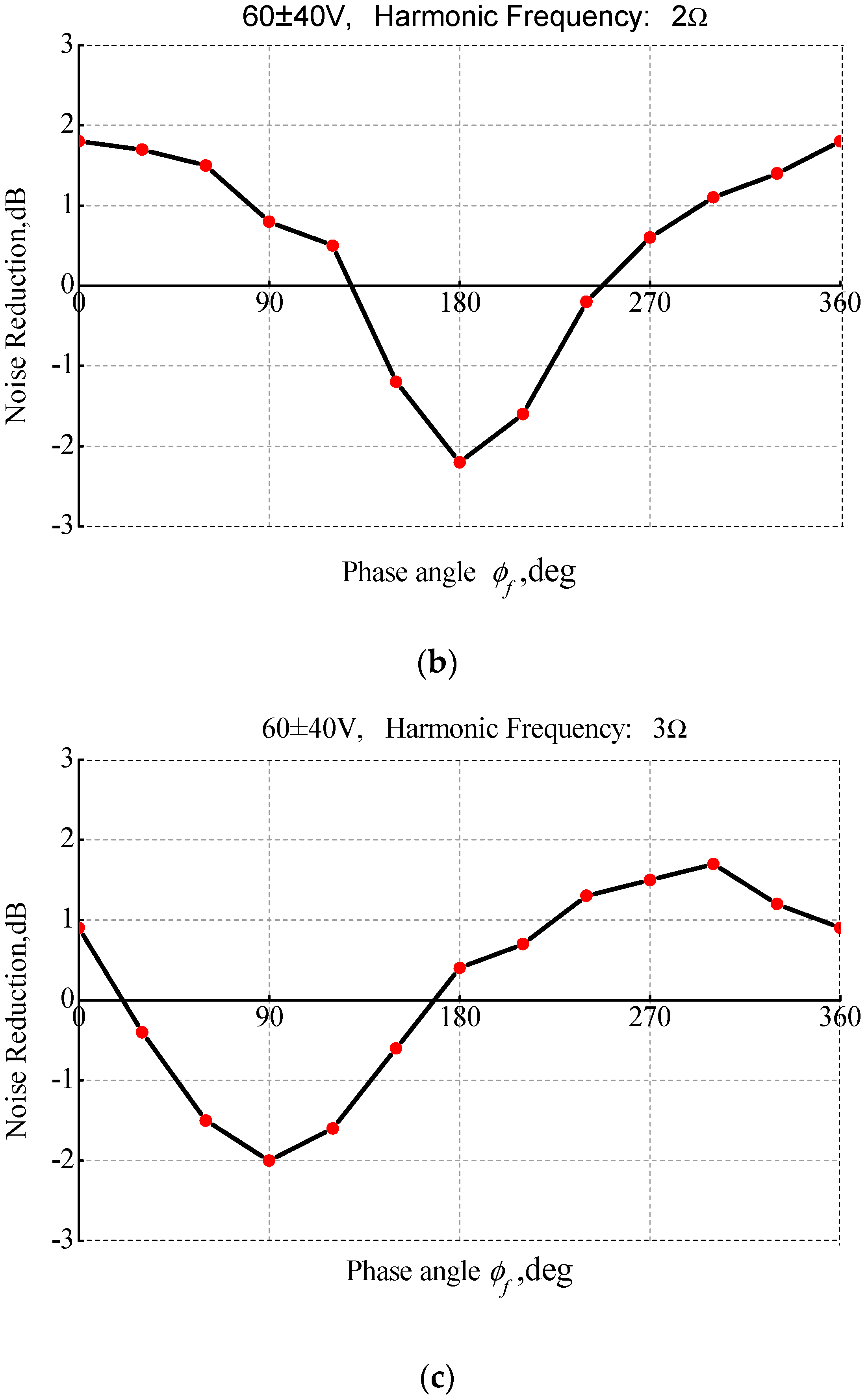

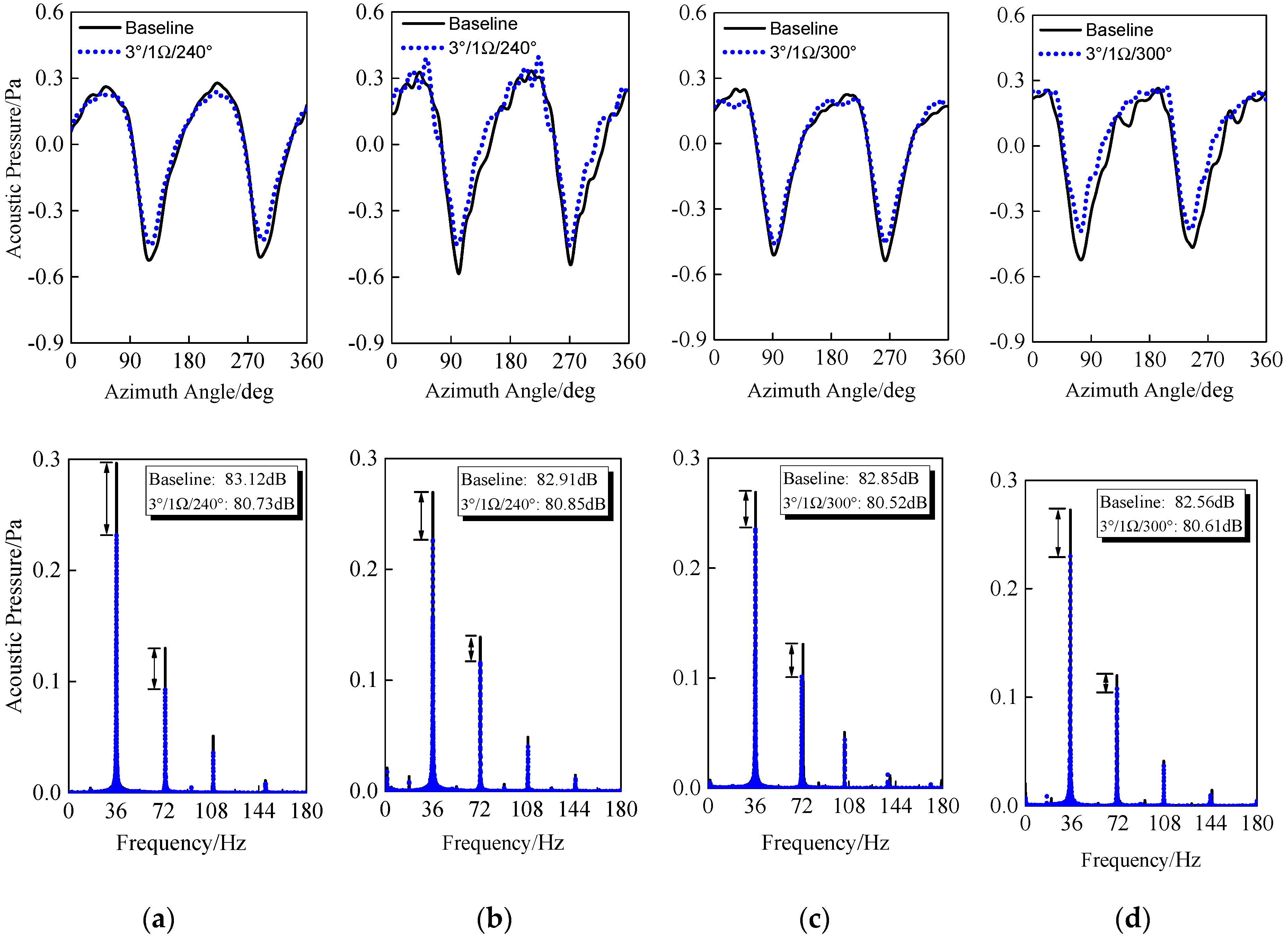
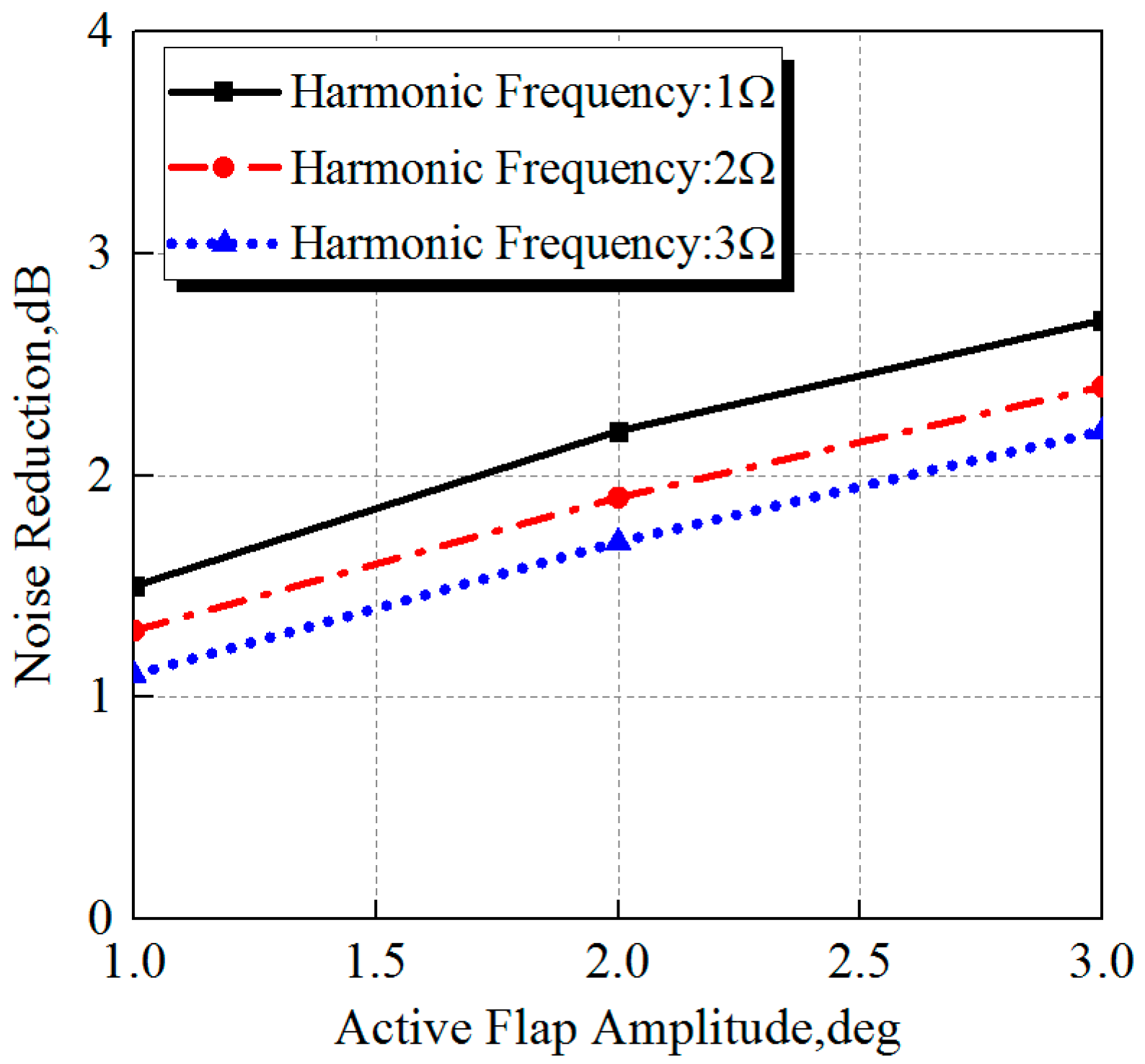
| Parameter | Value |
|---|---|
| Rotation speed, | |
| Rotation frequency, | 18 Hz |
| Collective pitch | |
| Deflection rate, | |
| Alternating voltage | |
| Initial phase azimuth, |
© 2019 by the authors. Licensee MDPI, Basel, Switzerland. This article is an open access article distributed under the terms and conditions of the Creative Commons Attribution (CC BY) license (http://creativecommons.org/licenses/by/4.0/).
Share and Cite
Shi, Y.; Li, T.; He, X.; Dong, L.; Xu, G. Helicopter Rotor Thickness Noise Control Using Unsteady Force Excitation. Appl. Sci. 2019, 9, 1351. https://doi.org/10.3390/app9071351
Shi Y, Li T, He X, Dong L, Xu G. Helicopter Rotor Thickness Noise Control Using Unsteady Force Excitation. Applied Sciences. 2019; 9(7):1351. https://doi.org/10.3390/app9071351
Chicago/Turabian StyleShi, Yongjie, Teng Li, Xiang He, Linghua Dong, and Guohua Xu. 2019. "Helicopter Rotor Thickness Noise Control Using Unsteady Force Excitation" Applied Sciences 9, no. 7: 1351. https://doi.org/10.3390/app9071351




